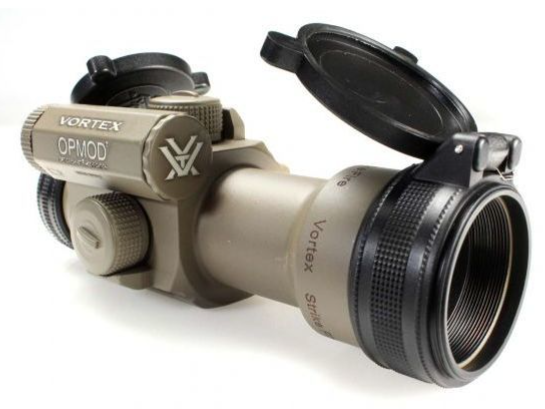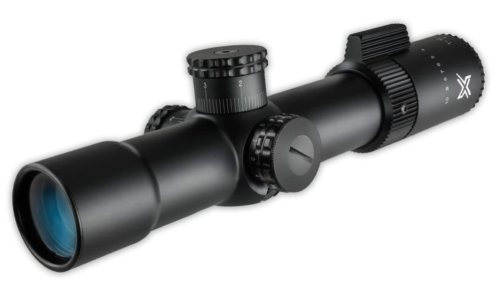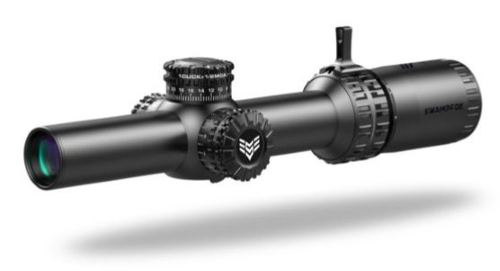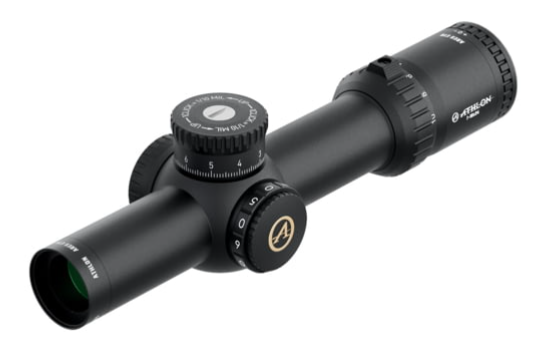If you are considering making the switch to an LPVO, make sure you know the facts before purchasing one to ensure that you are getting one that fits your shooting style.
Using an LPVO has its benefits and negatives, but it can be an excellent investment based on your requirements.
Learn everything you need to know about LPVO optics below.
What is an LPVO?

LPVO stands for Low Power Variable Optic, and that means that your optic can magnify from a true 1x up to 10x or higher.
Based on the model of LPVO, you will have a dial or lever that allows you to change from a 1x to 10x quickly.
The ability to swap your magnification on the go is great for those who want the ability to shoot accurately at various distances.
With a quick adjustment, you can go from having a 1x close quarters sight to hitting the deck and engaging enemies hundreds of yards away.
The primary benefit of an LPVO is the versatility that it gives you to engage your target.
While on a battlefield, you do not know where or when an enemy will engage you.
With a low power variable optic, you will be ready for any combat scenario.
The United States Marine Corps is equipping their new M27 Infantry Automatic Rifle with LPVOs for that reason.
Low power variable optics have gained quite a bit of popularity over the last few years for a good reason.
Below are seven things you need to know about low powered variable optics.
Table of Contents
#1. First Focal Plane vs. Second Focal Plane
An LPVO can have a first focal plane or a second focal plane.
With first focal plane scopes, as you increase the magnification, the reticle on the scope gets larger as the magnification increases.
The reticle on a second focal plane scope will stay the same size no matter the magnification.
You may wonder if one type is better than the other, and the answer is that it is a personal preference.
Some may enjoy the reticle getting larger with the increased magnification because it is easier to see your reticle.
If you want to max out your range, a first focal plane scope is excellent for long range shooting.
With a second focal plane optic, you will have pinpoint aiming at a lower magnification.
If you are shooting primarily in the 1x-6x range, a second focal point optic may be preferred.
Still, if you are going for 8x or higher, you may want a first focal plane optic.
#2. Available in Different Reticles

One of the excellent features of LPVOs is that they come in a variety of reticles.
Some reticles are better suited for specific focal plane scopes, such as a crosshair would be great in a second focal plane scope and not a first.
With a variety of power options, you can get extra illumination for low light environments.
With first plane focal scopes, your reticle will adjust to the range, which means that your reticle markers for distance will also change.
When looking through a second focal plane scope, you can not accurately make adjustments for range unless you are set to the maximum magnification.
If making fine adjustments on the go is essential to you, purchase a first focal plane LPVO.
With complex reticles, you will have an inner dot for precision shooting and an outer circle for speed shooting.
Complex reticles usually are found on first plane scopes.
Low power variable optics can come with mil-spec, MRAD, or MOA reticles to fit your preference.
#3. Size and Weight
Red dot sights can be compact and will not take much room on your weapon or rail.
This is not the case with low power variable optics.
These types of optics are larger, longer, and heavier than a standard optic.
To achieve long range magnification on an LPVO, the sight needs extra room for the optics and hardware.
If you are looking for something compact, go with a red dot or another scope because LPVOs will take up your entire rail.
But, the benefits of having a variable sight far outweigh the disadvantages of the size and weight of the sight.
Being able to confidently take down your targets at any range is just plan awesome.
A way to look at it is if you are going to shoot close range only, stick with a red dot or holographic sight.
Any distance beyond that, an LPVO outperforms those sights every time.
#4. Can Be Complex
With basic 1x sights or 10x scopes, you know exactly what you are looking at every time you look through the optic.
Low power variable optic sights can have a different look each time you look through them.
For example, if you need to engage your target at a close range, a 1x red dot sight will have the same fast target acquisition.
Now, if you left the LPVO on 10x, you would need to adjust your sight before you can take a precise shot.
Even with the shortest delay, you could lose your target.
With training and experience, shooters will adapt to an LPVO and have the same response time when acquiring and firing upon a target.
#5. Eye Relief
Depending on the optics that you use, your eye relief can be quite different.
For instance, if you are using an ACOG 4x RCO, you need to have your eye close to the sight to prevent scope shadow, which destroys sight picture.
For a better field of view and situational awareness, you must have proper eye relief on your scope.
Low power variable optics like the Athlon Optics Ares ETR 1-10x24mm have an eye relief of 3.7 inches.
The Ares is a First Focal Plane optic that provides up to 10x magnification.
At $949.99, you are getting an optic that is shockproof, fog proof, and waterproof.
It also has an etched glass reticle to provide optimum precision even if your battery dies.
It is available at Optics Planet. Here’s where to buy it: www.OpticsPlanet.com
If you are shooting only at close range targets, you may be interested in sights that have unlimited eye relief.
A red dot sight would provide a better field of view with unlimited eye relief, making it better for close quarters combat.
However, an LPVO is still an excellent sight for CQB since it has a true 1x sight.
#6. Price

Compared to standard optics, low power variable optics can be quite a bit more expensive.
If you prefer close ranged shooting, you can get a high-quality red dot sight from $100 to $200.
For example, you can purchase a Vortex StrikeFire II Sight for $189.
An equivalent LPVO will run you several hundred dollars.
When shopping for a low power variable optic, it is important to know that second focal plane optics are not as expensive to manufacture and will be less costly than a first focal plane scope.
The Swampfox Arrowhead LPVO 1-8×24 riflescope is available from Optics Planet for $409.
It has a second focal plane reticle and magnifies up to 8 times.
It has a wide 100 yard field of view, is resistant to 1,100 G force impact damage, and is IPX-7 water resistant.
Here’s where to get it: www.OpticsPlanet.com
The Atibal X 1-10×30 Rifle Scope is a first focal plane optic that has up to 10x magnification.
It is fog, water, and shockproof and comes with a lifetime warranty.
The downside is that it costs $680.
Some first focal plane scopes can cost three or four times as much as a second focal plane scope.
If you want a highly accurate first focal plane optic, the Atibal X 1-10×30 Rifle Scope is an excellent choice.
It is available from Optics Planet. Here’s where to get it: www.OpticsPlanet.com
#7. Is it Better Than a Red Dot or Other Sight
Each shooter has a preference for what range they want to engage targets.
If the average scenario you will run is in close quarters combat, you probably would rather equip a red dot or holographic sight.
Can a low power variable optic perform well at close quarters?
Yes, an low power variable optic will perform well at close range, but it will be quite a bit larger on your weapon and weigh you down.
Also, a red dot or holographic sight will also be a cheaper option.
However, a red dot will not be up to the task if you shoot at long range targets.
If you are only shooting at long range targets, buy a standard magnified scope.
Where the LPVO really shines is the middle range because you can adjust your sight as needed to match your target while keeping situational awareness.
Overall, if you want the best of both worlds, a low power variable optic is the best way to go.
Optics Planet is an excellent source for quality low power variable optics and other tactical equipment.
Get the right gear at the right price at Optics Planet.
References / Resources
LPVO vs. Red Dot Sights: Which Is Better?
Advanced Combat Optical Gunsight
- Ikon Pass Military Discount: Learn How To Save Big - January 31, 2025
- RTIC Military Discount: Find Out How To Save Big on Gear - January 30, 2025
- Traeger Military Discount: Learn How To Save Big on Smokers - January 28, 2025


